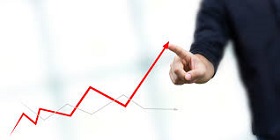Analytics, Economics, Estonia, GDP, Markets and Companies
International Internet Magazine. Baltic States news & analytics
Thursday, 25.04.2024, 17:32
Swedbank raises Estonia's economic growth forecast for 2018 to 3.9%
 Print version
Print version |
|---|
Economic growth in Estonia accelerated to 4.4% in 2017, the fastest pace since 2011. The growth was broad based and supported both by foreign demand and economic activity on the domestic market. Stronger economic activity has increased the demand for labor. At the same time, the number of job vacancies has risen, and the shortage of labor has become an increasingly serious problem, the bank said in its analysis on Wednesday.
The bank expects that GDP growth will remain strong in 2018, increasing to close to 4% in real terms. Robust foreign demand and rising export prices are allowing Estonian enterprises to increase their export turnover. The government sector will continue to raise its investments with the support of the EU structural funds. However, at this point in the growth cycle, such a strong fiscal stimulus to the Estonian economy is wrongly timed, the bank said.
Robust demand and increased investments contribute to productivity growth. Although the tight labor market will maintain fast wage growth, the changes in income taxation could lower wage growth expectations. The bank forecasts a salary increase of 6%, or 0.7 percentage points more than in November, for this year.
Swedbank expects that productivity growth will exceed wage growth in 2018 and 2019. This will help to improve Estonian enterprises' profitability and slow the deterioration of their price competitiveness against trade partners. Unemployment is expected to total 7% this year, while employment is not expected to increase.
Estonian households' financial situation is expected to remain strong. Average purchasing power of households will improve with the support of the increase in their nontaxable income, and this should give stronger momentum to the growth of private consumption in 2018. The bank forecasts that inflation will total 3% this year and 2.5% next year.
According to the forecast GDP growth will decelerate to 3% in 2019, primarily due to cyclical factors. Because of the openness of the Estonian economy, the main downward risks to the current baseline scenario are related to the external environment.








 «The Baltic Course» Is Sold and Stays in Business!
«The Baltic Course» Is Sold and Stays in Business!

